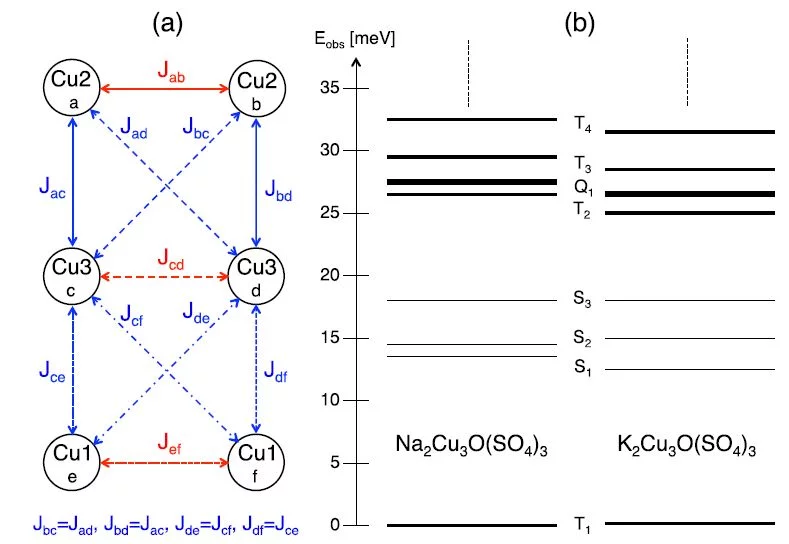The compounds A2Cu3O(SO4)3(A=Na,K) are characterized by copper hexamers which are weakly coupled along the b axis to realize one-dimensional antiferromagnetic chains below TN≈3K, whereas the interchain interactions along the a and c axes are negligible. We investigated the energy-level splittings of the copper hexamers by inelastic neutron scattering below and above TN. The eight lowest-lying hexamer states could be unambiguously assigned and parametrized in terms of a Heisenberg exchange Hamiltonian, providing direct experimental evidence for an S=1 triplet ground-state associated with the copper hexamers. Therefore, the compounds A2Cu3O(SO4)3 serve as cluster-based spin-1 antiferromagnets to support Haldane's conjecture that a gap appears in the excitation spectrum below TN, which was verified by inelastic neutron scattering.
Keywords: Magnetism; one-dimensional antiferromagnetic chains; inelastic neutron scattering;
Facility: SSC, LMX, LNS, SINQ, Oak Ridge National Laboratory
Reference: A. Furrer et al., Phys. Rev. B 98, 180410(R) (2018)
Read full article: [here]


